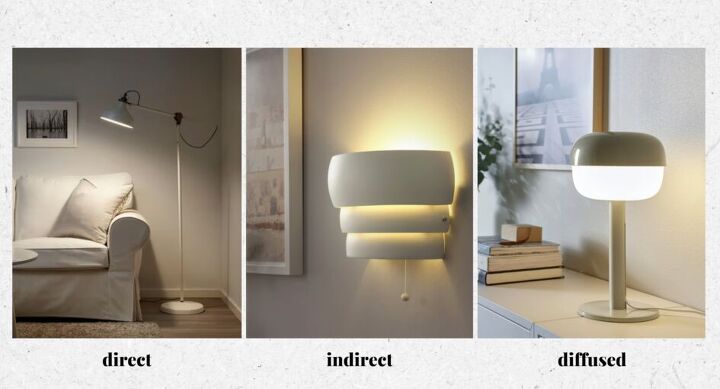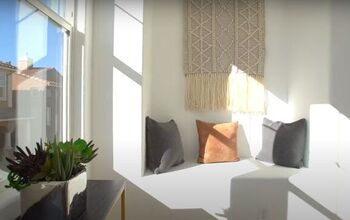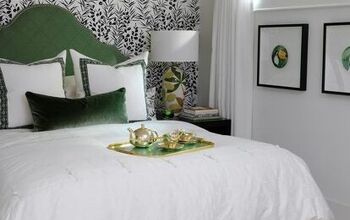8 Rules For Home Lighting Design: How to Light Your Home

Have you ever wondered why some rooms look so much more inviting in the evening than others? Let me tell you a secret, it's all about lamps.
I'm going to go through 8 simple home lighting design rules that you can use to light up your home today so that it feels comfortable, cozy, and perfectly functional from this day forward.
While selecting furniture and decor is the most exciting part of owning a home, light design for home interiors plays a critical role as well. Here are 8 home lighting design rules you should keep in mind.
Home lighting design
1. Don’t rely on overhead lights
The first rule is to never rely on just the overhead light. The biggest mistake you can make with lighting, apart from having no light at all, is to have one single source of light in the ceiling. It casts a very unflattering uniform light that makes everyone and everything look kind of terrible.
2. Get more lights
As for how many lights should be in the room, it really depends on the size and layout of the space. But as a rule of thumb, I would say go for between 5 to 7 light sources per room. And if you have an extra huge room, maybe go for something around 9. This sounds like a lot of different light sources, but it's really not.
3. Use 4 types of light
Now that we've established the quantity of light you need per space, let's talk about the different types of lighting. In a room, it's likely that you have 4 different categories of light, and you should aim to have at least 1 type of light from each category in each room.
General lighting
First, we have general lighting. This can be a ceiling light that spreads ambient light all over the room.
Task lighting
Then, we have task lighting, which is the type of light you use to perform a very specific task, like using a table lamp while you're at your desk, a floor lamp while you read, and strip lighting above the kitchen counter while you’re chopping vegetables.
Spotlighting
The third category is spotlighting, which is used to direct your attention to very specific features in your home. This can be a work of art on the wall or family photos.
Atmospheric lighting
Lastly, you have atmospheric lighting, like fairy lights or string lights.
Let's bring up a photo of a bathroom to see how we could light the space using these four categories of lamps.
- For general lighting, I think we'll install some ceiling lights.
- For task lighting, we could have some lights that are hanging on either side of the mirror.
- For spotlighting, we could install strips of lighting behind the mirror.
- For atmospheric lighting, I think we could have some dimmable lights next to the bathtub or a couple of candles.
4. Consider the location of lighting
Now that we've established the quantity and types of lighting that we need in a room, let's discuss where they need to go. You should identify if there are specific zones or functions in the room, and then place light according to each of these functions.
If you have a large dining table that you want people to gather around, place a lot of pendant lights above the dining table to create a pool of light over it.
If you have a particular armchair that you want to use for reading, make sure it has a light next to it.
If you've spent three months' salary on a gigantic TV screen and you really want people to notice it, put some lights behind the TV screen and have them on all the time.
5. Avoid garish colors
The color of the light in our room is also really important and can vastly affect our mood.
Bright and strong colors like blue, red, and green distort how people look and affect the way we interact with others, so it's best to avoid using these garish colors at home.
6. Pick a warm temperature
When it comes to choosing the color temperature of the lights in your home, you should go for something that's warm white, and the best lamp for your home will have a warm bulb in it.
Kelvins
Color temperatures are measured in Kelvins and determine whether the light is warm or cool. The lower the Kelvin number, the warmer the color, and the higher the number, the cooler and bluer the color.
For a warm and cozy home, I would recommend a temperature between 2,700 to 3,000 Kelvins.
On the other hand, if you have a workshop in your home, you can then use a higher color temperature. This is why in a lot of spaces like hospitals and offices, you don't feel very warm and cozy because of the color light bulbs they use. It's very white and bright.
7. Pay attention to softness
There are three ways for light to come out of this magical thing called the light bulb and illuminate your space. Direct, indirect, and diffused.
Direct light
Direct light is for task lighting, like when you switch on a torch and you shine it all around.
Indirect light
Indirect light is used more for accent lighting, so this is when you project a light against the wall, and then you have some soft light that bounces off the surface.
Diffused light
Diffused light is when the beam of light is filtered through a lampshade.
8. Recognize good vs. bad lampshades
Wireframe lampshades, rattan lampshades, and all sorts of lampshades that have a pattern and perforations will cast very strong shadows from your light source.
Home lighting design
Those are the 8 rules I use to create the best lighting strategy in my home and in other’s homes. Following these 8 rules can take your home lighting design to the next level, helping you create a cozy ambiance every time you enter a room. Let’s learn from each other. Share your own lighting successes and failures in the comments section below.


































Comments
Join the conversation